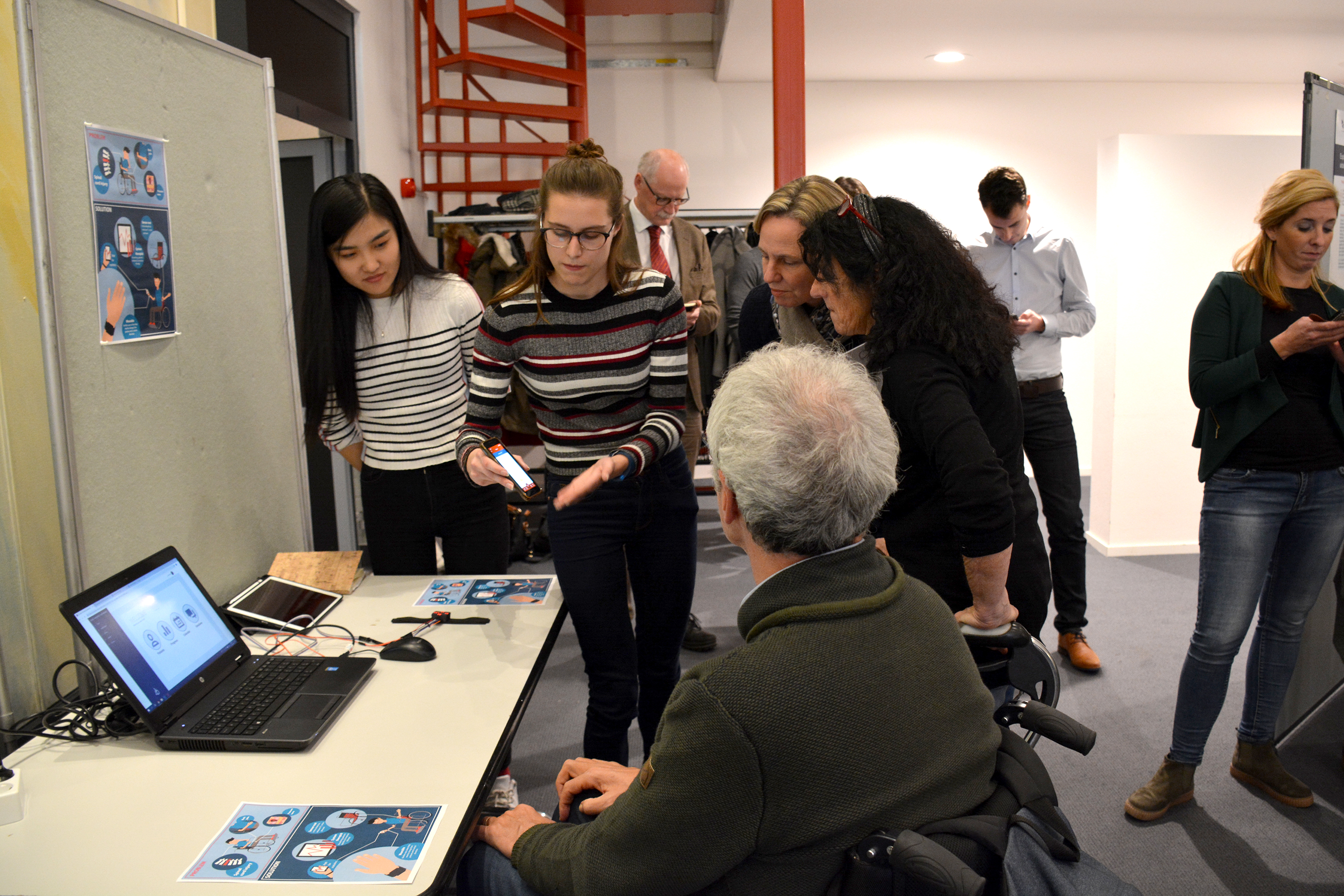

Design Project 2018 | 4 months
Industrial Design, University of Technology Eindhoven, NL
Team: Marit Proper, Emma Reiling, Samantha Galvez
Cooperation: Adelante Healthcare Group
Sitbit: Improving Posture and Changing Behavior for Wheelchair Users
Adelante is the main partner of the i2-CoRT program, which which brings together stakeholders with various backgrounds to promote rehabilitation technology innovation. Zitpoli is the department at Adelante that focuses on seating and seating problems.
Problems
Wheelchair users with spinal cord injury suffer from long-term sitting problems
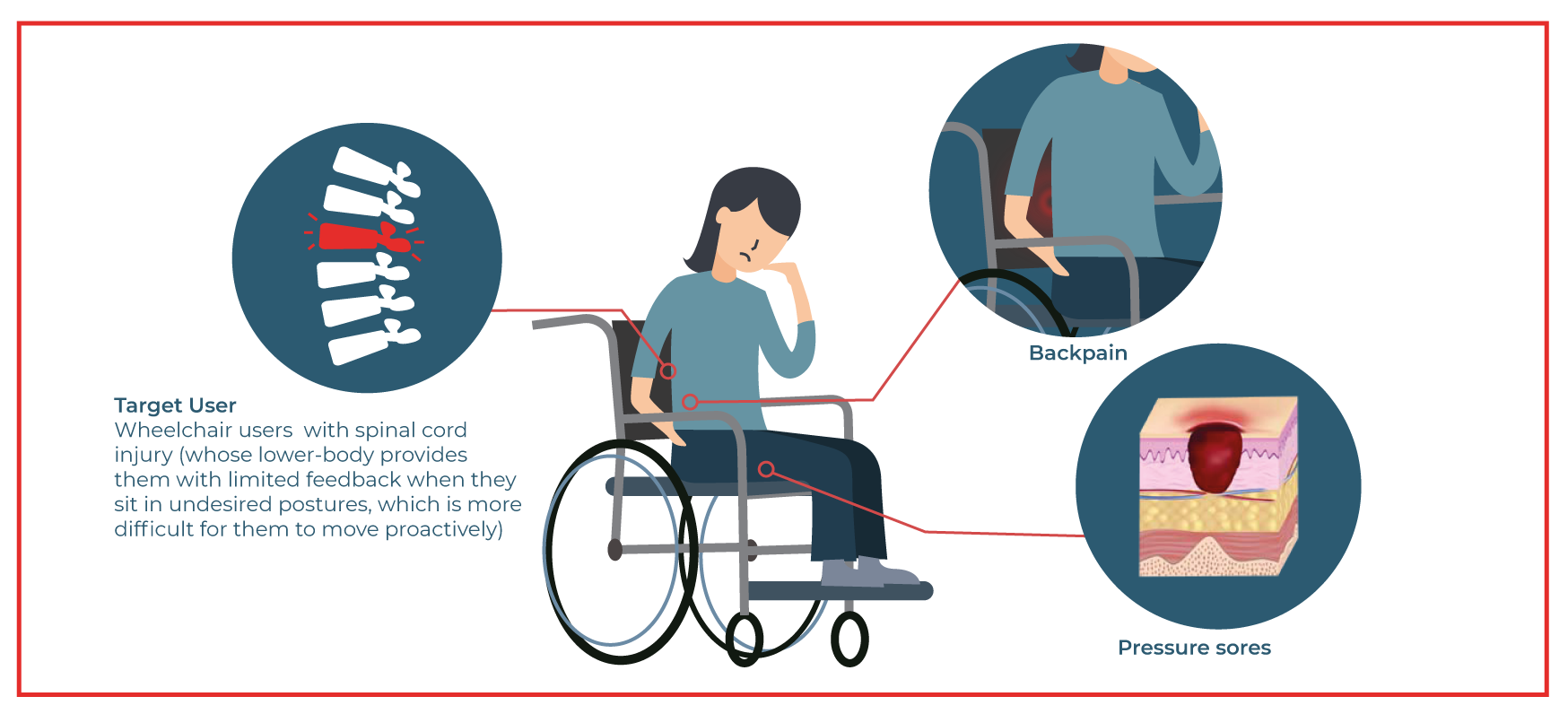
Solution
The Sitbit system includes the sensor mat, wearable, user application, and therapists dashboard. The data from the sensor mat is collected and can be analyzed to create a personalized feedback system. In this project, we investigated the intuitive design to provide reminders for wheelchair users with spinal cord injury, which could lead to a behavior change in a long-term run.
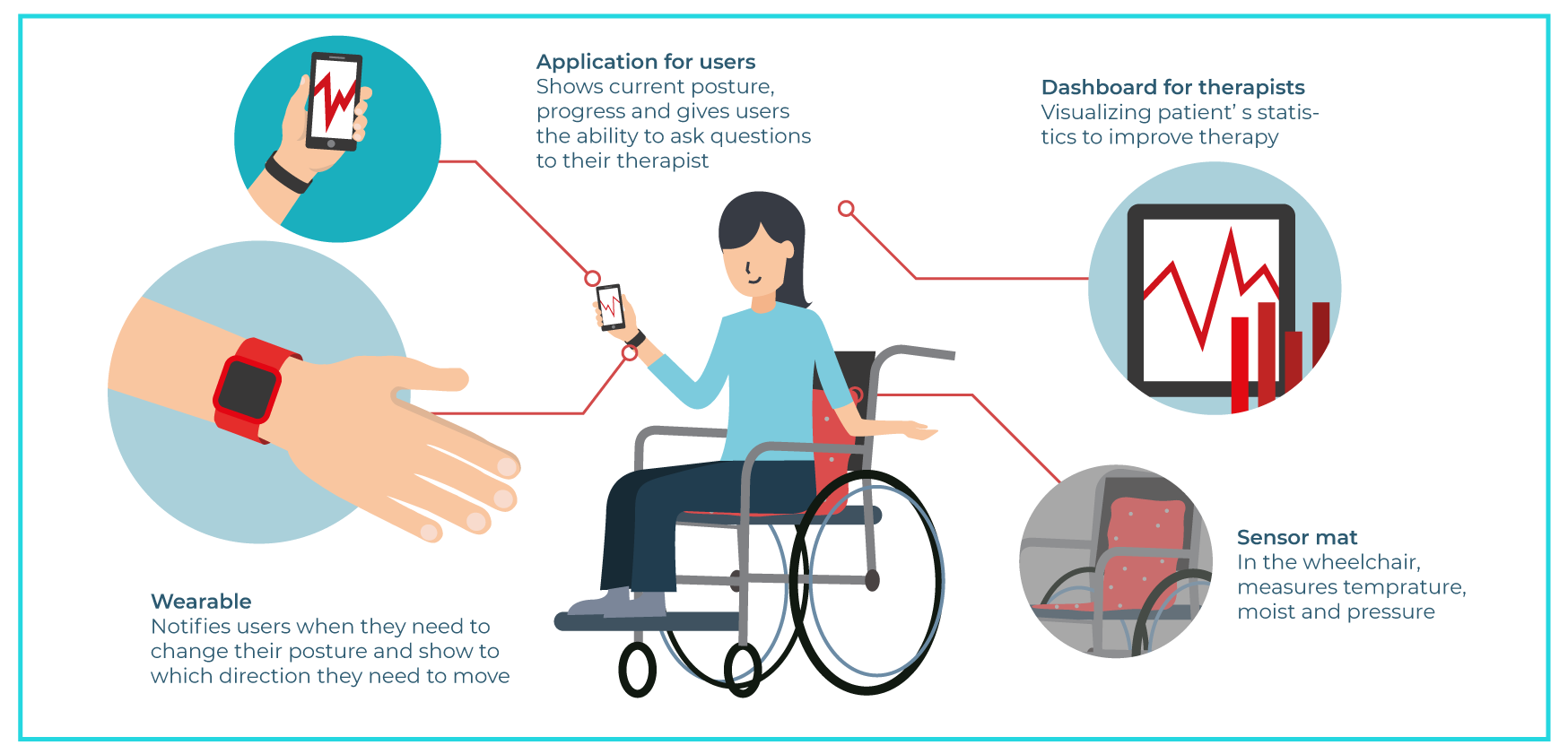
Skill: user experience design, empathic design, behavior change
Discovering & Deifning


1. Understanding the design brief and desk research on specific medical terms,
2. Interviewing the physio therapists and learning about the Zitpoli project and draft the patient journey to better understand the rehabilitation process,
3. Define deisgn goal and brainstorming the potential solutions.
Patient Journey Zitpoli Adelante
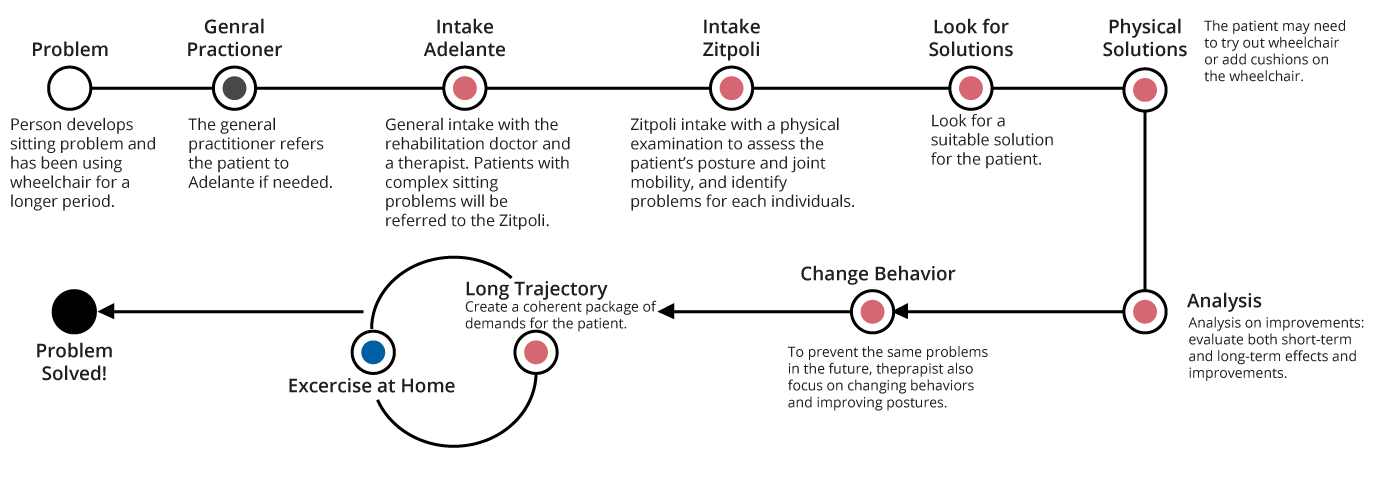
Empathy Map of the wheelchair users
Being in a wheelchair is a visible handicap, the social pressure could reduce the intention, therefore the wearable should not be as a medical instrument that makes the users get further discriminated and deterioration. By this, we also add new meaning
we created is: it is a pleasurable accessory, which does not embarrass the users showing to people and can be a conversation starter. As the major factor influence behavioral intention, we add more “personal agency” to the
product, or so-called personal autonomy, which is one of the most important aspects derived from that empathy map.

Ideation
In order to support the patient's long-term behavior change and fulfill their needs, , we decided to create a holistic solution to (1) remind the patients to change their sitting posture with subtle and instant feedbacks, (2) give overview of their own progress, and (3) support the therapists to collect frequent data of their patients.
Wearable Fashionable accessary wearables to provide real-time feedback and notifications, which enables them to be aware of their seating problems and autonomously decides to change their posture.

Phone App For Patient A hub allows the user to check their progress and get positive feedback, or to communicate with their therapists if needed.

Dashboard For Therapist A comprehensive platform providing detailed information on wheelchair users, facilitating efficient management and communication with patients.
Wearable
The wearable device functions as a stylish accessory and alerts users with vibrations when a posture change is needed. Its silicone strap and casing provide a secure grip, while the LED display guides users with moving dots representing their buttocks. Once adjusted, the display turns off to minimize distraction.
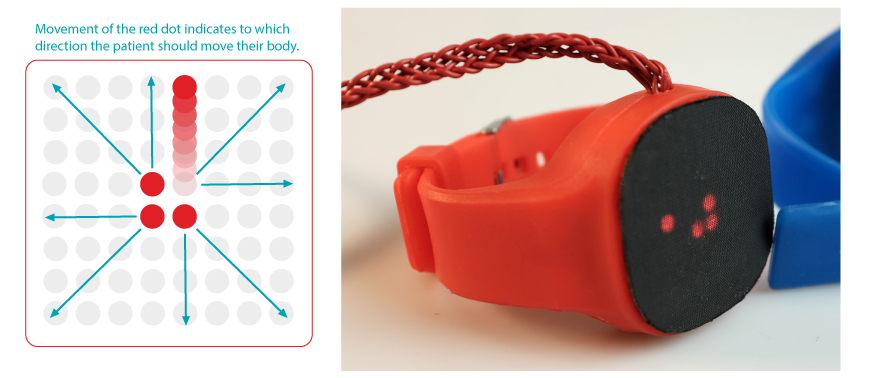
Prototyping:The experiential prototype integrates an LED matrix and vibration motor controlled by an Arduino UNO. The prototyping process involves sketching, experimenting with wearable configurations, exploring vibration sensations, and designing light patterns.

Mobile App
The patient mobile app offers three key functions:
(1) Progress Tracking: users can view their progress over time through graphs, including successful improvements made daily, weekly, or monthly.
(2) Devices Setup: Users can change notifications for their wearable devices and connect new devices via the app.
(3) Therapist Interaction: The app serves as a portal for patients to chat with their therapist, allowing for instant questions and communication for any inquiries.

Feedback Session
